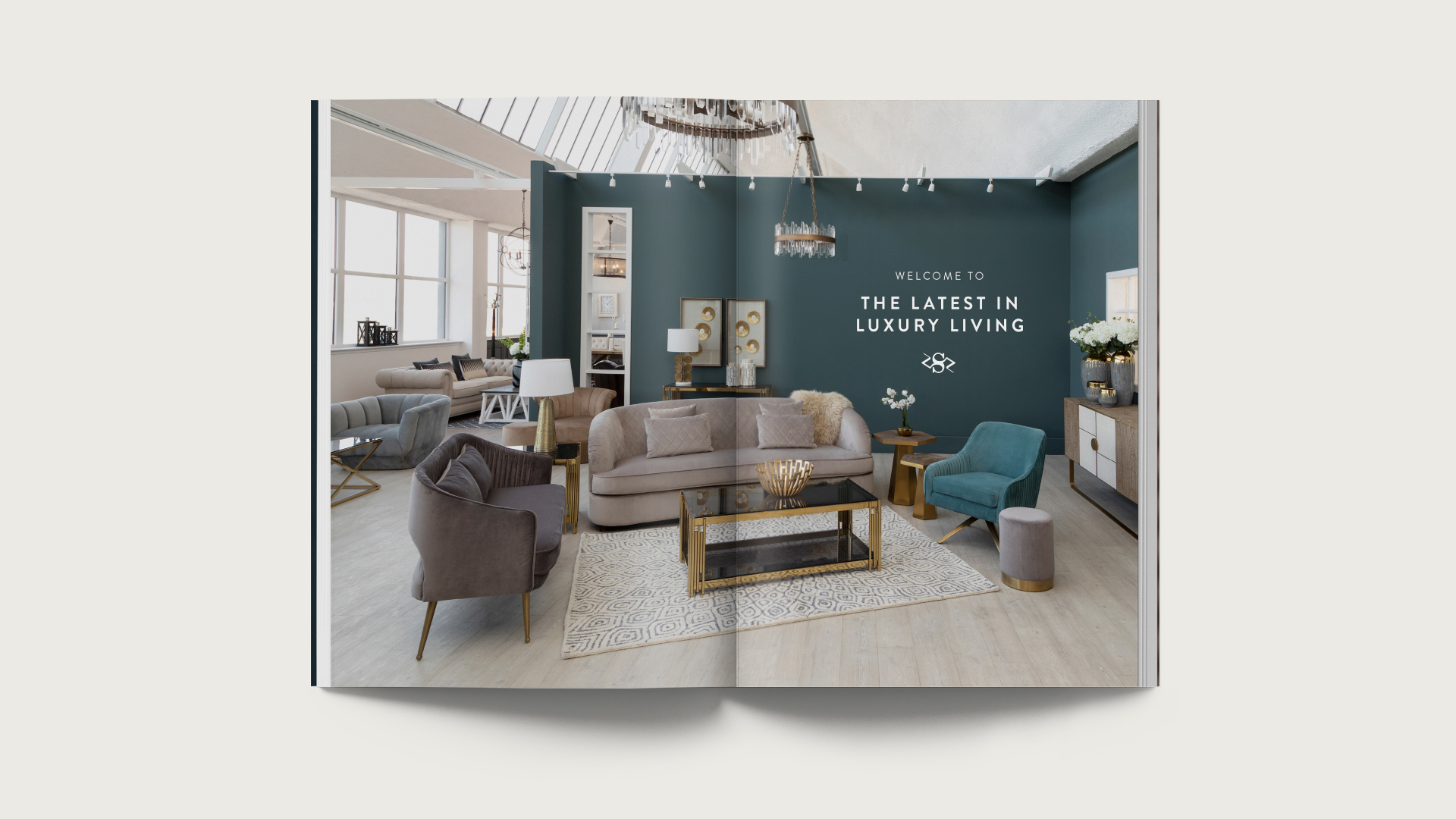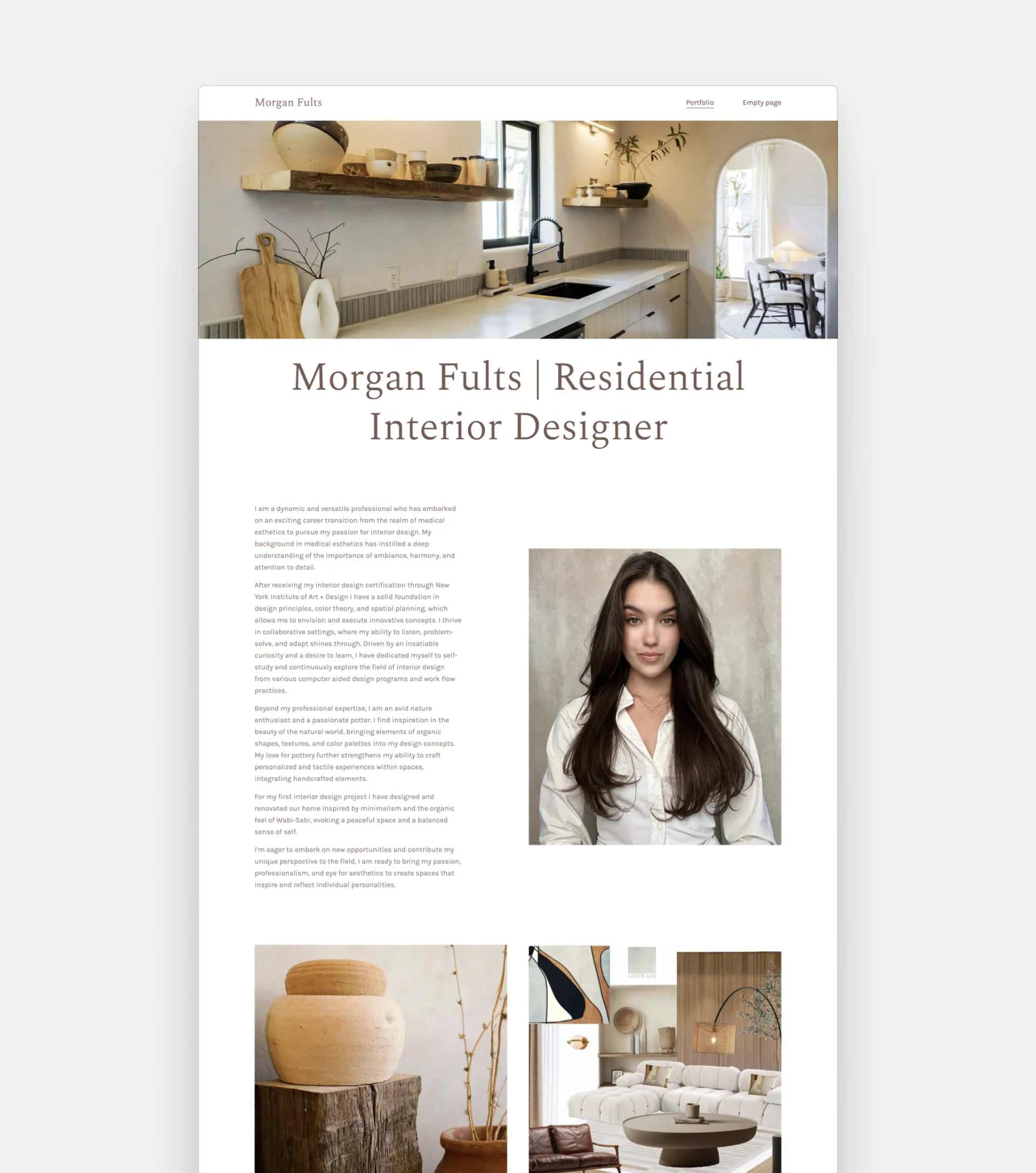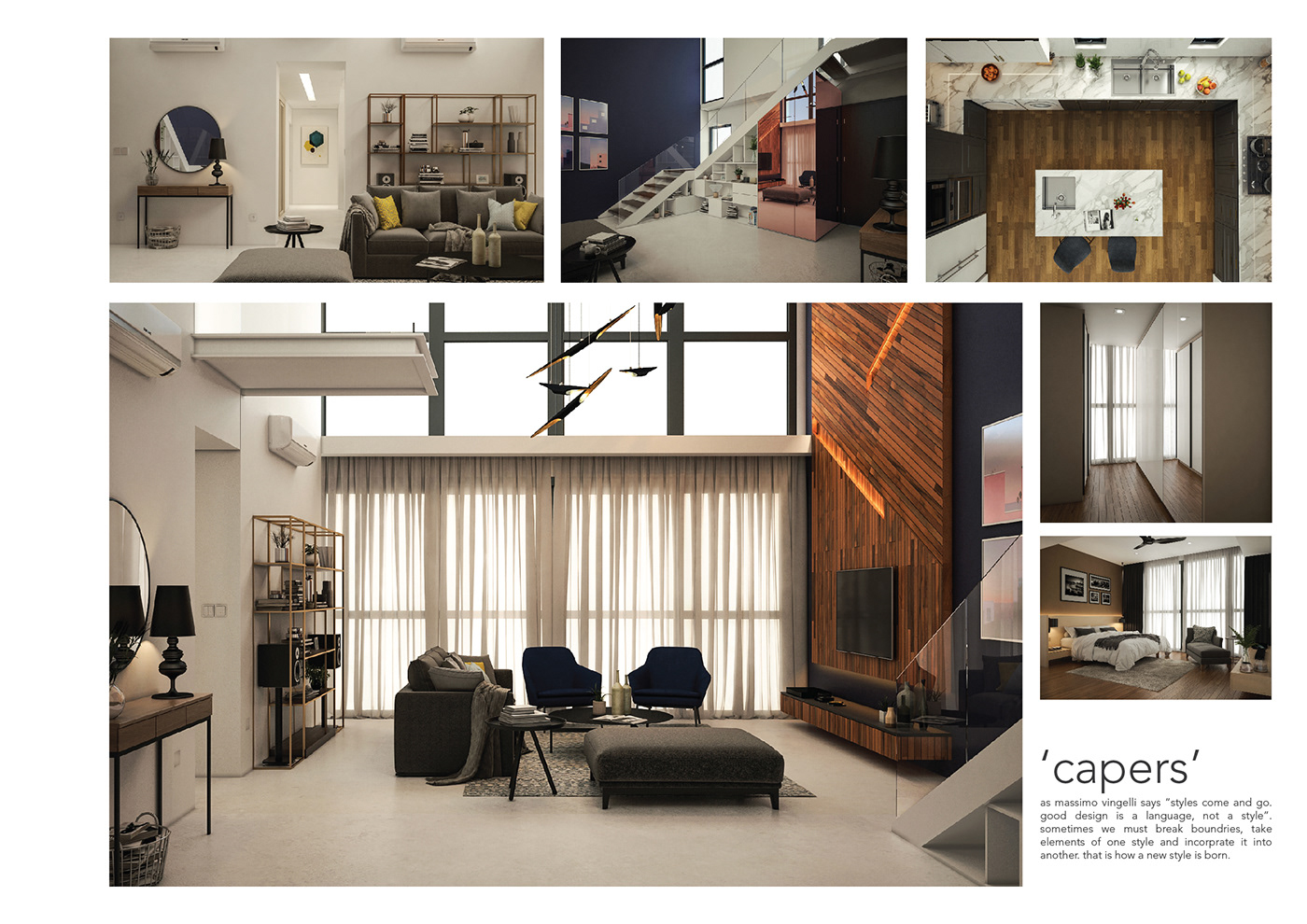
If you’re a budding interior designer looking to showcase your skills and land your dream projects, having a compelling portfolio is essential. Your portfolio is your calling card, a visual representation of your creative vision and expertise. It’s the first impression potential clients will have of your work, so it’s crucial to make it impressive and attention-grabbing.
But how do you create an interior design portfolio that stands out from the rest?
First and foremost, focus on quality over quantity. It’s better to have a curated selection of your best work than to overwhelm your audience with mediocre projects. Choose only your most compelling and diverse projects that showcase a range of styles, techniques, and creative solutions.
Secondly, pay attention to the presentation. Think about the flow and organization of your portfolio. Start with a strong introduction that captures the viewer’s attention and gives them a sense of your design philosophy. Arrange your projects in a cohesive and logical way, allowing the viewer to navigate through your portfolio effortlessly.
Tips for showcasing your interior design portfolio
When it comes to showcasing your interior design portfolio, presentation is key. Here are some tips to help you make a lasting impression:
1. Choose the right platform
Consider where and how you want to showcase your portfolio. Online platforms such as websites and social media are great for reaching a wider audience, while physical portfolios can be effective for in-person meetings and presentations. Choose a platform that best suits your target audience and the type of work you do.
2. Curate your best work

Quality over quantity is essential when it comes to creating a portfolio. Select your best and most representative projects to include. Showcasing a variety of styles and design solutions can demonstrate your versatility as a designer.
3. Tell a story
Aim to narrate a story with your portfolio by including a brief description of each project. Explain your thought process, design challenges, and the solutions you implemented. This helps potential clients or employers understand your approach and creativity.
4. Show before and after transformations
For interior design projects that involve renovation or remodelling, make sure to include before and after photos. This allows viewers to understand the scope of your work and the impact your designs have made.
5. Use high-quality images
Invest in professional photography or learn how to take high-quality photos yourself. Clear, visually appealing images are crucial for showcasing the details and aesthetics of your designs. Multiple angles and close-up shots can provide a comprehensive view of your work.
6. Consider including sketches and renderings
Alongside the final project images, including sketches and digital renderings can give insight into your design process and creative thinking. This can add depth to your portfolio and demonstrate your ability to communicate ideas visually.
7. Organize your portfolio
Create a logical and easy-to-navigate structure for your portfolio. Consider organizing your projects by style, room type, or client type. This allows viewers to quickly find the information they are interested in and provides a cohesive viewing experience.
By following these tips, you can effectively showcase your interior design portfolio and leave a strong impression on potential clients or employers.
Creating a visually appealing portfolio
When it comes to creating an interior design portfolio, one of the most important aspects is making it visually appealing. Remember, this portfolio is a representation of your work and should captivate potential clients or employers from the moment they lay eyes on it. Here are a few tips to ensure your portfolio stands out:
Showcase your best work
Your portfolio should highlight your best and most impressive projects. Choose a selection of projects that demonstrate your versatility, creativity, and attention to detail. Include photographs, floor plans, and any other visual materials that showcase the full potential of your designs.
Pay attention to layout and organization
An organized and well-thought-out layout is crucial for a visually appealing portfolio. Make sure your projects are presented in a logical order that flows smoothly. Consider using a grid or column-based layout to create a sense of harmony and balance. Pay attention to spacing, font choices, and consistent formatting to maintain a cohesive look throughout the portfolio.
Use high-quality visuals
Poor quality images can detract from the overall impact of your portfolio. Make sure to use high-resolution images that accurately represent your work. Consider hiring a professional photographer to capture your designs in the best possible light. Additionally, pay attention to the color accuracy and make sure the images are free from any distortions or blurriness.
Don’t forget to include a variety of visuals, such as renderings, sketches, mood boards, and other design-related materials. This will give potential clients or employers a comprehensive understanding of your design process and expertise.
Keep it concise and focused
While it’s important to showcase a variety of projects, it’s equally important to keep your portfolio concise and focused. Too many projects can overwhelm the viewer and dilute the impact of your best work. Choose a select number of projects that represent the breadth of your skills and experience.
Remember, a visually appealing portfolio is a powerful tool to showcase your interior design talent. Use these tips to create a portfolio that will leave a lasting impression on potential clients or employers.
Highlighting your best projects
When creating your interior design portfolio, it’s important to showcase your best projects to make a lasting impression on potential clients or employers. Here are some tips on how to effectively highlight your best projects:
1. Start with a strong introduction
Begin by introducing your portfolio with a brief description of your design philosophy and what sets you apart from other designers. This will give viewers an idea of your style and approach.
2. Use high-quality images
Make sure to include high-quality images of your projects that capture the essence of your design. Use professional photography or renderings to showcase your work in the best light possible. Consider using before and after shots to demonstrate your design skills and the transformation you made.
3. Include a variety of project types
Showcase a range of project types to demonstrate your versatility and ability to work with different styles and spaces. Include residential, commercial, and hospitality projects to show the breadth of your experience.
4. Highlight your role in each project
Explain your role in each project, whether you were the lead designer or part of a team. Describe the challenges you faced and how you overcame them. This will give viewers a better understanding of your skills and expertise.
5. Include client testimonials
Include testimonials from satisfied clients to provide social proof of your abilities. Choose quotes that highlight the positive impact your design had on their space and how you exceeded their expectations.
6. Share the design process
Provide insight into your design process by including sketches, mood boards, and 3D renderings. This will give viewers a glimpse into your creative process and the thought behind your designs.
7. Organize your projects effectively
Arrange your projects in a logical and organized manner. Consider grouping projects by style, location, or type to make it easy for viewers to navigate your portfolio. Use clear titles and headings to guide them through.
By following these tips and effectively highlighting your best projects, you’ll be able to create an impressive interior design portfolio that showcases your skills and attracts new clients or job opportunities.
Organizing and presenting your portfolio effectively
When it comes to creating an impressive interior design portfolio, organizing and presenting your work in a cohesive and professional manner is essential. Here are some tips to help you showcase your talents effectively:
1. Start with a strong introduction
Your portfolio should begin with a compelling introduction that captures the attention of potential clients or employers. This could be a brief description of your design philosophy, your design influences, or a summary of your most notable projects.
2. Arrange your work in a logical order
When organizing your portfolio, consider arranging your work in a logical order that tells a story. Start with your strongest projects, showcasing a variety of design styles and techniques. It’s also important to ensure that your work flows smoothly from one project to the next.
3. Use high-quality photographs
High-quality photographs are crucial for showcasing your design projects effectively. Invest in professional photography or learn how to take high-quality photos yourself. Ensure that the lighting, composition, and focus are all well-executed. You may also consider including before and after photos to demonstrate the transformation of a space.
4. Provide clear and concise descriptions
Accompany each project with clear and concise descriptions that highlight the key aspects of your design. Avoid using technical jargon and aim for a language that is accessible to a wide audience. Use bullet points or short paragraphs to make it easy to read and understand.
5. Demonstrate your technical skills

In addition to showcasing your completed projects, consider including examples of your technical skills. This could include technical drawings, floor plans, and 3D renderings. Showing that you have a strong understanding of the technical aspects of design can be impressive to potential clients or employers.
6. Keep it concise
While it’s important to showcase a variety of your work, it’s also crucial to keep your portfolio concise and focused. Include only your best and most relevant projects to demonstrate the breadth and depth of your skills. Aim for quality over quantity to leave a lasting impression.
By organizing and presenting your interior design portfolio effectively, you can showcase your talents and abilities in a way that captivates potential clients or employers. Follow these tips to make a memorable impression and increase your chances of landing your dream projects or job opportunities.
